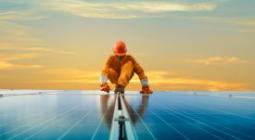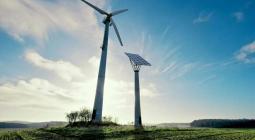Missing link for renewable energy storage – hot stones?
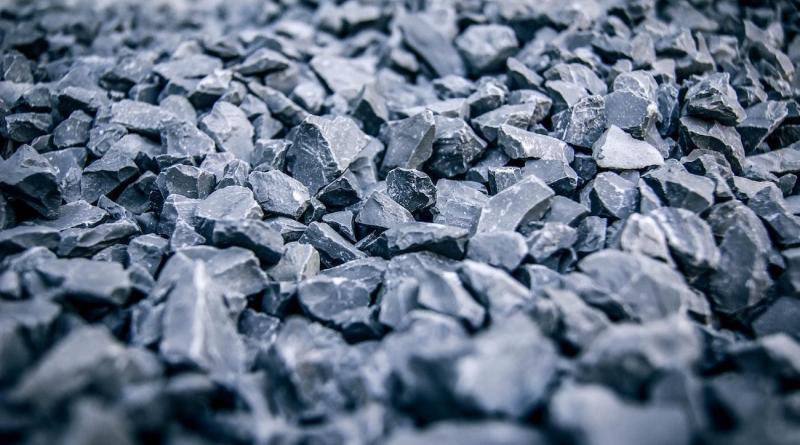
On Monday, the Danish minister of education and research, Tommy Ahlers, attended the official inauguration of a giant pilot facility that will use 600 degree hot stones to store energy. Speaking to dr.dk, he said: “This could be the missing link in our renewable energy transformation.” (It’s arguable whether there really is a missing link, but that’s another story.) High-temperature thermal energy storage (HT-TES) is the technical term. The basic concept of the project is that cheap, non-degradable, and environmentally friendly storage materials combined with known charging and discharging technology can reduce the cost and increase the efficiency of energy storage.
Test Facility In Denmark To Be Proof Of Concept For High Temperature Thermal Energy Storage Using Stones As Storage
Imagine a big box of small black stones, the size of an IKEA warehouse, insulated on all sides, very big, but very easy to build. The idea is that when excess energy is produced by intermittent renewable sources like wind and solar, this energy is used to pump very hot air into the stone storage, where the energy in the form of heat can be stored for many days with very little loss on average. The process is reversed by forcing the hot air out of the storage, which in turn creates steam from water to drive electricity-generating turbines and produce hot water for district heating.
For future theoretical storage in Denmark, the technical university DTU has identified storage needs of 10% of 1.4 GW baseload in 2035: 830 hours per year at full capacity (>300 MWh stored and released on average per day). Storage requirements are equivalent to 1 storage solution of 1.227 million cubic meters (e.g. 600 by 200 by 10 meters). The storage solution can be virtually invisible in the surroundings.
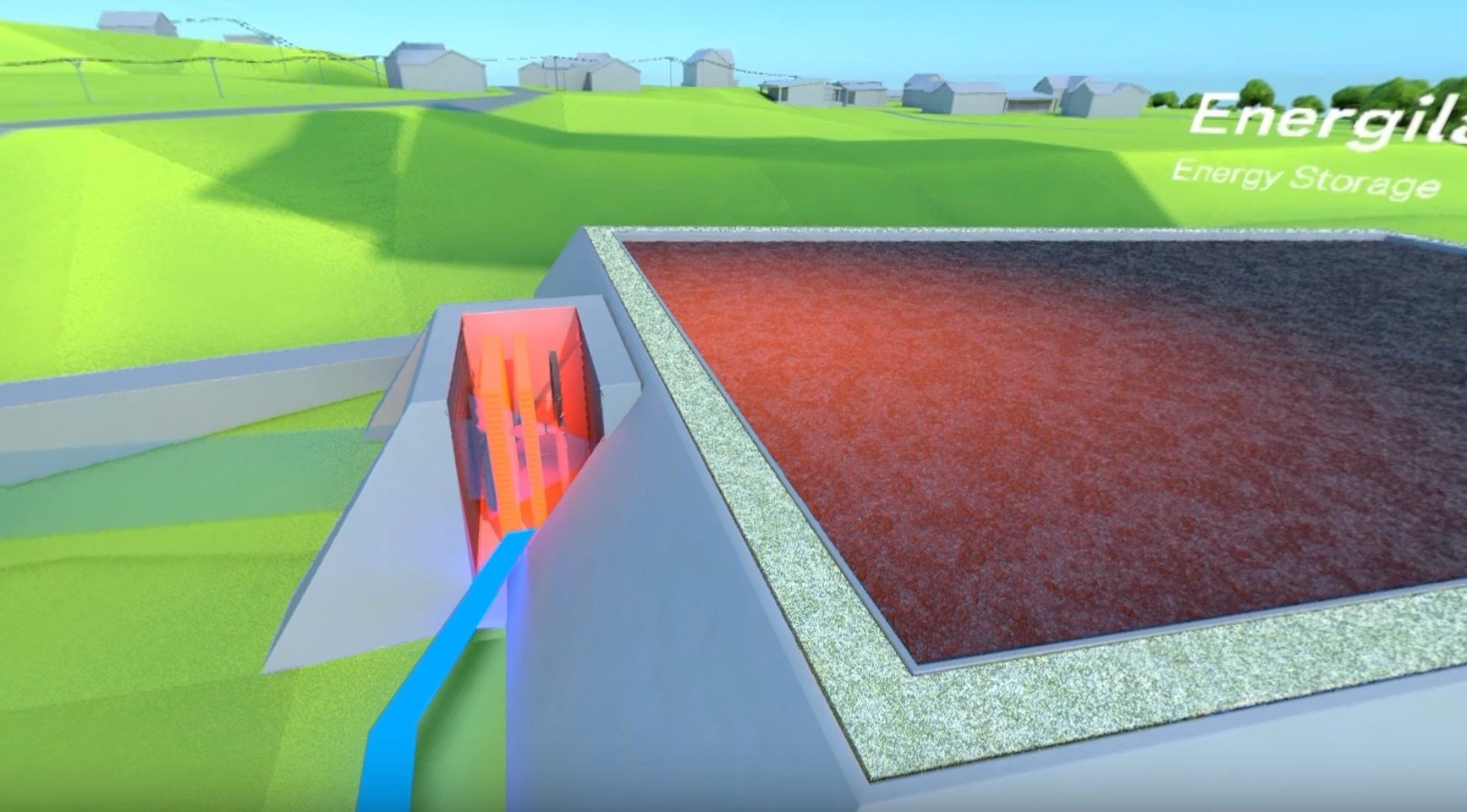
Energy company SEAS-NVE and the technical university DTU have built a small-scale test facility of this grand idea in collaboration with partners at Risø Campus, including Aarhus University, Danish Energy, Energinet.dk, EUDP (who has supported the project with research funding), and Rockwool. Niras has contributed to the work of constructing the plant. To Ritzau, Tommy Ahlers said:
“The world we love so much will not remain the same without solutions like this. The last 4 years have been the warmest in recent history, and that worries me. I have gone into politics to create change, and it can succeed with projects like this. Here, universities, businesses and energy companies have joined forces. This is a high-class entrepreneurship, and the solution has potential far beyond Denmark’s borders.”
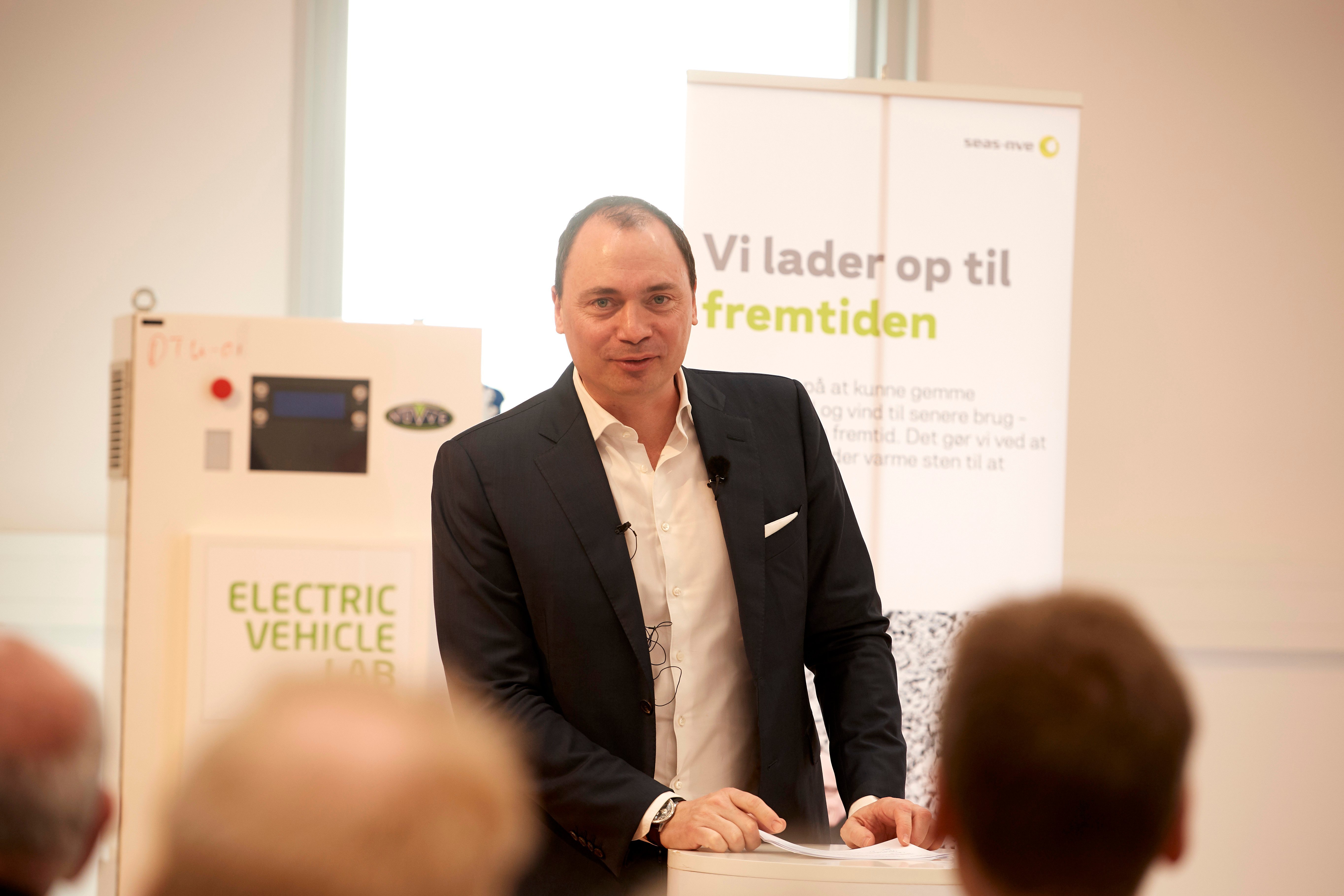
Recent days have been very windy. In fact, over the past week, I’ve seen on energinet.dkthat Denmark had very long stretches of hours with more that 1.5 GW of excess wind-produced electricity on the grid. Most of that was exported to Norway and Sweden. As I write this, it is a quiet sunny morning without much wind, and thus Denmark now imports almost 1 GW of electricity from Norway. This a fine arrangement, but imagine being able to store energy at country scale without having to buy and sell at nature’s will. Denmark is a flat country without bedrock at the surface, so digging holes and filling them with stones seems straightforward.

Jesper Hjulmand, CEO of SEAS-NVE, is very pleased with the project that all partners have worked intensively on since the summer of 2016:
“Geologists from Aarhus University are testing and finding the right stones, and together with Niras and researchers from DTU, we have built the bowl-shaped energy storage model, which has been partly dug into the ground. It is a bit like a large ball grill, where you blow heat into the many stones, and the heat from the stones can then be sucked out again.”
On the perspectives of a solution on a large scale, Jesper Hjulmand adds:
“Now we must measure and analyze this setup before we decide to proceed with larger test plants. It is insanely exciting because the vision of a 100% fossil-free energy supply cannot, in my best judgment, be realized without energy storage.”

Information from The Danish Energy Agency’s Technology Directory from 2016, supplemented with data from Storasol’s commercial prices in 2016, and World Bank 2015, is summarized as follows on energilager.nu:
- Price per stored kWh (electricity): DKK 300 ($46).
- Volume (quantity of energy that can be stored at each site): 1–500 MWh.
- Possibility of increasing quantity of stored energy: Yes.
- Lifetime: > 30 years.
- Energy lost in the storage process (heat): 1–5%, depending on insulation.
- Environmental impact: None, except if gas and not electricity is used as a heating source.
- Geographical location requirements: Best in relation to existing cogeneration plants.
One of the big advantages with this concept is that since Denmark already has a very comprehensive distributed district heating system in place, the relative loss in generating electricity from the heat has less impact. This helps to ensure a high level of utilisation for the stored energy, even as the price of chemical battery storage gets increasingly competitive.
The project’s aim is to ensure that it is financially viable to save energy in much larger quantities and over longer periods than previously. But the project is not just a technological project. It will also reveal the challenges and prerequisites for adding high-capacity energy storage to an existing grid, an existing market model, and an existing tax system, thereby helping to pave the way for energy storage in a broader sense. The market potential for storage will be fully investigated during the project period, but it is expected to be achieved with a budget below DKK 100 million ($15 million) because the storage is so cheap to build.
It will of course be expensive to build enough storage facilities to actually cover a whole country’s energy needs for several hours, but in principle, it’s very much doable. Just add stones.
“The high penetration of variable wind power will require balancing through a combination of flexible supply, demand response, storage and electricity trade.” (Nordic Energy Technology Perspectives 2016 EIA)
It will be interesting to see how this scales up. I can’t help thinking whether cheap chemical battery storage that is very versatile in its physical nature could maybe disrupt even rational and environmentally friendly concepts like this. The race for the 100% renewable, non-intermittent, whole-world solution is on.
March 2019
Red Green and Blue

